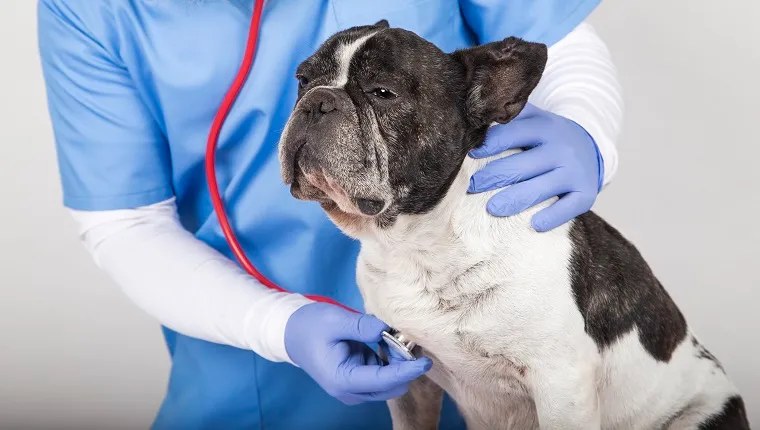Pulmonic stenosis in dogs is a congenital medical condition that results in issues with the proper flow of blood through a dog’s pulmonary valve in the heart. This can bring about a wide range of symptoms that vary in severity, from heart murmurs to congestive heart failure.
Additionally, certain breeds of dog, including Scottish Terriers, English Bulldogs, and Chihuahuas, seem to have the highest risk of suffering from this condition.
If you see signs that your canine might be developing cardiovascular issues, then you must consult your veterinarian for a proper diagnosis and advice. Here’s what you should know about the symptoms, causes, and treatments of pulmonic stenosis in dogs.
Symptoms Of Pulmonic Stenosis In Dogs
Pulmonic stenosis in dogs can produce different symptoms depending on which precise type of the condition — valvular, subvalvular, or supravalvular — has developed. Dogs with milder forms may not show any symptoms at all.
Some of the most common symptoms in general that do appear include:
- Reluctance to exercise
- Breathing issues
- Heart arrhythmias
- Collapsing
- Swollen abdomen (also called abdominal distension)
Causes Of Pulmonic Stenosis In Dogs

The cause of pulmonic stenosis in dogs is congenital, which means that puppies are born with the condition.
Certain breeds of dog seem to have a higher risk than other dogs. Some of the dog breeds that are most likely to suffer from the condition include:
- Beagles
- Scottish Terriers
- English Bulldogs
- Boxers
- Boston Terriers
- Newfoundlands
- Cocker Spaniels
- Chihuahuas
- Miniature Schnauzers
- Samoyeds
Veterinary Treatments
If you suspect that your dog is suffering from pulmonic stenosis, your veterinarian will want to ask about your dog’s full medical history and then carry out a complete physical examination. They’ll take blood and urine tests, which can help rule out other conditions.
The vet will likely also recommend the use of X-rays and associated imaging techniques to properly examine your dog’s heart and abdomen.
When it comes to treatment, the exact course will usually relate to the precise extent of the condition and how badly a dog’s heart valve is being obstructed.
Dogs with severe cases might require a spell in hospital, and vets sometimes consider a surgical procedure called a valvuloplasty as a way to alleviate obstructions to the valve.
While your dog recovers at home, your vet might prescribe medicine. As always, if your vet prescribes your canine any medicine, it is vital that you stick to the precise frequency and dosage instructions and complete the full course of medication.
Has your dog developed pulmonic stenosis? What steps are you and your vet taking to help your pooch stay healthy? Tell us all about it in the comments below.









